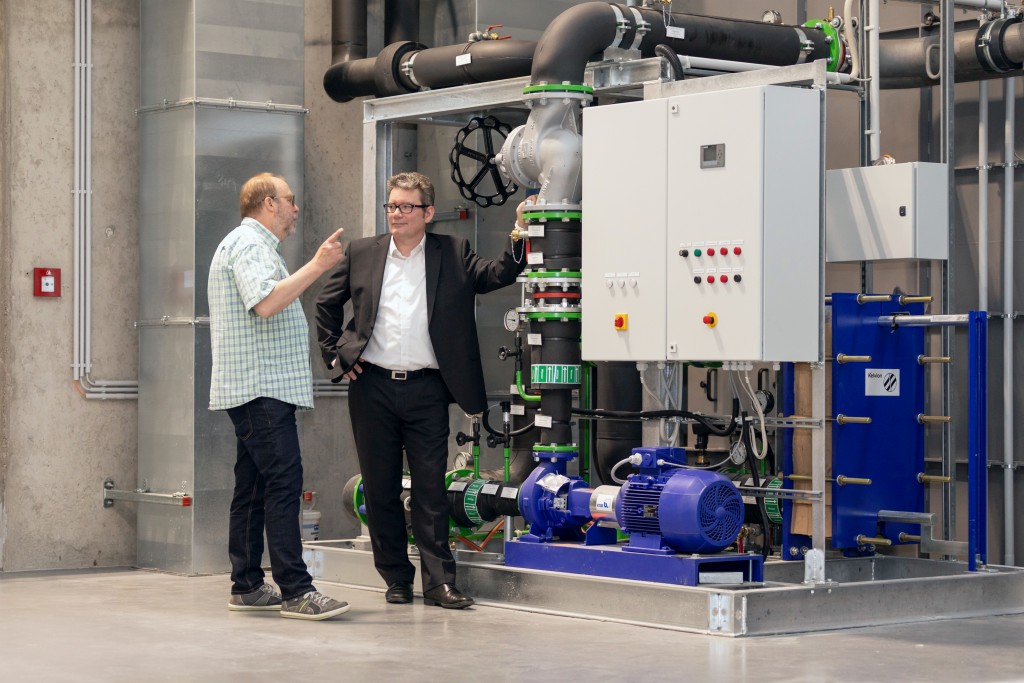A modern car would be unthinkable without plastics. This is why the professors Martin Müller and
Achim Schmiemann, both from the Faculty of Automotive Engineering, make a good team. In this
interview they talk about the research area Vehicle Construction, Polymers and Materials Science
and their collaboration. And they explain how industry benefits from their research.
Professor Müller, Professor Schmiemann, what do you work on in the research area Vehicle
Construction, Polymers and Materials Science?
Martin Müller: To a large extent on the current issues in the automotive industry. How can we
increase resource efficiency? How can we lower energy consumption and CO2 emissions? How can we use
simulations to support vehicle construction even better? Important topics are lightweight
construction, aerodynamics, drive technology and also vehicle safety. In the future we will be able
to move more or less freely in the vehicle, a development that requires completely new restraint
systems for occupant protection. Autonomous driving and digitisation will change a lot of things –
thus there is a lot of work to do.
Achim Schmiemann: I’m from the material sciences and deal with the issue of sustainability, in
particular with the recycling of plastics. Since the component parts for vehicles have to be
increasingly sustainable, our research is very important. It concerns not only the car but
outreaches far beyond. We also deal with the pollution of rivers and seas with plastic particles.
We have a very good analysis to investigate samples and determine the source of the pollution.
How can we picture the collaboration in your team?
Achim Schmiemann: There are many points of contact. We have just filed a proposal to research
light-weight roof constructions made of plastic. The companies have a great interest in this. The
fact that they are participating with not inconsiderable sums shows the potential of the
cooperation. The companies hope to gain an economic advantage with our research.
Martin Müller: Lightweight construction is a fundamental research topic for us. With the right
combination of plastics, metals and hybrid structures we can accomplish a great deal. Also battery
research, where increasing energy density is an essential factor, plays a major role for us. In
addition, there are numerous small issues we’re involved in.
In the automotive industry hybrid lightweight construction makes many things possible. What are
you working on?
Achim Schmiemann: In the future, we will be able to enrich structures with carbon fibers in
vehicle construction in order to achieve high stability. We are investigating how we can get the
carbon fibers out of these lightweight structures at the end of their life cycle and what we can do
with them in their second life.
Martin Müller: Several steps before this, the concern is how we can combine the materials best.
It is our job to describe the hybrid structures with simulation technology – such as the optimum
geometry of structures, the fiber content, and the orientation of the fibers.
Which resources are available to you to research new vehicle concepts?
Martin Müller: There are a lot. In our wind tunnel we can measure the resistance and propulsion
of the vehicle – with the aim of reducing consumption and improving the driving dynamics. We also
use the wind tunnel in teaching. This gives our students a better understanding of the parameters
affecting the vehicle.
What else is available to you?
Martin Müller: We have a drop tower in order to simulate crashes. Simply explained: There is a
component at the bottom and a mass comes flying down from above that is up to 500 kilograms. We can
measure the deformation and find out how large the risk of injury is in the interior. Also, optical
measurement technology provides us with many ways to describe thermal or mechanical stress.
How do you benefit from your research area?
Martin Müller: The proximity to application makes us strong. We research not just to let our
results end up in the bottom drawer, but to be put into series production. This ambition is
reflected in our teaching. When our graduates go into industry, they have an excellent
understanding of what is important in vehicle development. The application-oriented research is a
big plus point of Ostfalia. We are working directly on the product: concrete components.
Achim Schmiemann: For example, we have managed to re-invent thermoplastic foam injection
moulding. Together with the Volkswagen company research we developed and patented this procedure.
With this special procedure, components are produced serially.
Martin Müller: In a project we made it possible to reduce sheet metal thicknesses and compensate
for the loss of stiffness with lightweight materials. In this way we saved several kilos and
costs.
Why do you like your work?
Martin Müller: In research I have a lot of freedom. Yes, I must fight for my ideas, but I can
change a lot. I also like working with the students: although I’m getting older, the students
always remain young. So working with them is very refreshing.
Achim Schmiemann: I can only agree with that. We work on exciting projects. Including the
3D4Space project in which we conduct space research together with colleagues from the Technical
University of Braunschweig. Our task: How can we recycle things that are manufactured with
3D-printing processes on the moon or Mars? I never would have thought that I would land up in this
research area – even though I will probably never take a business trip to the moon.


